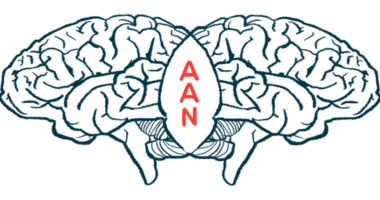New Algorithm Groups Parkinson’s Symptoms to Predict Progression

Naeblys/Shutterstock
Researchers with IBM and the Michael J. Fox Foundation developed a computational model that may help physicians better understand how Parkinson’s disease will progress among individuals.
In their study, the algorithm — based on a branch of computer science called machine learning — identified groups of Parkinson’s symptoms and predicted how they would progress in timing and severity.
That study, “Discovery of Parkinson’s disease states and disease progression modelling: a longitudinal data study using machine learning,” was published in The Lancet Digital Health.
“Hopefully, by using machine learning to learn from large amounts of patient data, clinicians and researchers could have a new tool to better predict the notoriously varying progression of symptoms in individual Parkinson’s patients,” IBM stated in a press release.
With this tool, doctors and researchers might “better manage and treat the disease, as well as use the best candidates for more targeted and effective clinical trials,” the company added.
Scientists analyzed medical records of people registered with the Parkinson’s Progression Markers Initiative (PPMI), an observational study designed to collect and catalogue as much information on Parkinson’s and its various features over an individual’s life as possible.
Up to seven years’ worth of medical records per person were gathered, covering 423 Parkinson’s patients and 196 healthy people serving as controls.
“Having access to a large dataset is crucial for success in machine learning models,” the company stated, “which is why the troves of data in the PPMI were key to our model’s viability.”
By using this data to “train” their algorithm to identify complex patterns of disease symptoms and progression, the researchers identified eight distinct Parkinson’s states. These run from the first state, which is the most mild, to the eighth and most severe state, also called the terminal state.
Importantly, the eight states identified by the algorithm largely agreed with clinical observations assigned to each corresponding individual.
The eight states are mainly defined by functional impairment, tremor, a stillness known as bradykinesia, and neuropsychiatric measures. States five and eight, for instance, associated with more postural instability or gait difficulty.
People in the eighth state were more likely than others to develop dementia, or motor symptoms that limited their daily ability to function.
Individual states appeared to influence disease progression. In other words, the state in which a person found themselves was likely to determine their future states.
“Although the states were constrained to be progressive, sequential progression through disease states was not observed,” the researchers noted. “Thus, our model discovered non-sequential, overlapping disease progression trajectories, supporting the use of non-deterministic disease progression models.”
The most observed transitions went from states seven to eight, six to seven, and four to six, while transitions directly from states one to eight, two to three, and four to seven were never observed.
A person’s starting state also appeared to affect how much time passed before reaching stage eight. Patients beginning in state five, for instance, tended to arrive at the terminal state faster than others (median time, 2.25 years).
The researchers acknowledge that much work remains to expand upon these preliminary results. In future work, for instance, they plan on adding information on biomarkers, such as genetic data and neuroimaging results.
Their hope, they wrote, is that their model “can help in patient management and provide more specific inclusion criteria and outcome definitions during clinical trial design.”







